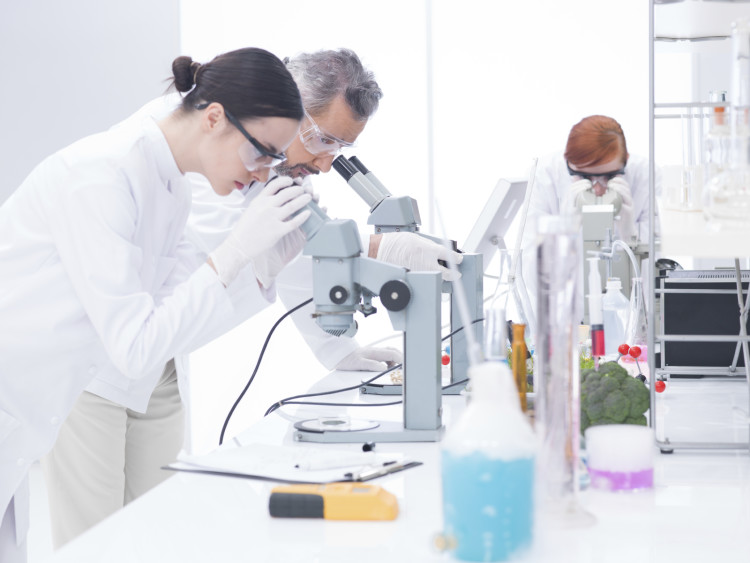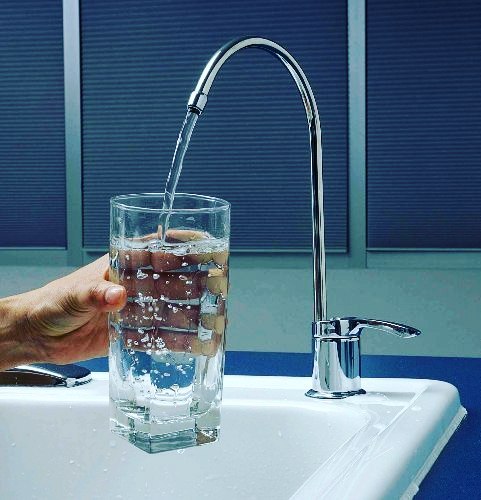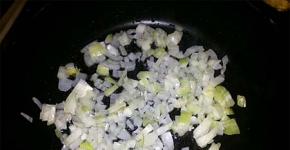Analysis of tap water. Tap water analysis
Using the central water supply, it is expected that the water will exactly meet all the requirements of SanPin. But it's not always the case. Conducted often shows that many indicators exceed the permissible norms. Most often, studies show an excess of salts of hardness and iron, which leads to the formation of scale, breakdowns of household appliances and clogged pipes. When conducting it is also possible to establish the presence of harmful microbes, organic and chemical impurities.
To understand the quality of water pouring from the tap you need to conduct a comprehensive analysis of the chemical composition of water. According to its results, you can choose the best.
Analysis of tap water in the laboratory
Most of the samples that are analyzed in the laboratory are exceeded.
. The reason for this - the old rusty sections of the pipeline. Often this water is turbid and yellowish. To clean water from iron particles is worth it if you want to avoid the occurrence of irritations and allergic reactions on the skin, as well as red smudges on plumbing and pipe blockages.For many regions, increased water hardness is a frequent problem of tap water. Such water is harmful both for consumption and for washing in it. Hardness salts tend to accumulate in the body, displacing nutrients and leading to serious heart and genitourinary diseases. In addition, on the surface of pipes, plumbing and heating elements of household appliances from the hard water are lime build-up - scum. It is very difficult to clean it, and household appliances will often have to be worn for repair or even bought new ones.
To avoid unpleasant consequences due to poor quality of the plumbing will allow timely analysis of water and, if necessary, the installation of a suitable filter.
How to get water for analysis
- Water must be taken to a clean 1.5 liter plastic bottle. It is advisable to use a plastic bottle out of plain water. It is strictly not allowed to use plastic bottles in which Pepsi-Cola, kvass and other flavored beverages were poured.
- Before dialing, it is necessary to open the tap and spill water for 5-10 minutes. This is necessary to remove stagnant water from the pipes.
- Rinse the bottle and cork several times before adding water. Do not use detergents.
- Try to pour water in a thin stream along the side of the bottle. This method will prevent water from being saturated with oxygen, as a result of which oxidation of ferrous iron to trivalent iron can occur.
- Water needs to be poured under the neck and tightly wrap cork. The presence of air under the plug is undesirable.
- If you can not immediately bring water to the analysis, it must be removed in the refrigerator. The storage time of water in the refrigerator should not exceed 48 hours.
Bring water for analysis to the office of our company ( location map and telephones).
Russian legislation imposes fairly stringent requirements on the quality of water entering the city water supply. At the water intake stations, constant monitoring is carried out for compliance with the requirements of GOST and sanitary-epidemiological standards.
The quality of water supplied to the consumer through the system of water pipes, Russia is at a distant 50th place in the world. We have supplied many cities with good quality tap water. But only in our capital, and more recently in St. Petersburg, you can afford the luxury of getting drunk right from the tap.
Stages of water purification in water utility
Vodokanal, engaged in the preparation and distribution of water, before supplying it to the consumer produces a preliminary cleaning:
- mechanical - there is a removal of sand, silt and other suspended particles;
- chemical - to neutralize and dissolve inorganic impurities, as well as reduce hardness to acceptable standards;
- bacteriological - for the destruction of bacteria using ultraviolet radiation, ozonation, or the cheapest and therefore the most common chlorination.

But the quality most often remains at the station. At the site between the preparation point and your crane, worn-out pipes may occur, in which secondary contamination occurs with compounds of iron and other metals. When carrying out repair work (especially with violations of technology), various impurities enter the pipes, which make a completely unknown liquid out of clean water.
How bad everything is, you can find out by doing the analysis of tap water coming from your tap in any certified laboratory SES.
Requirements for tap water
According to the federal law, certain requirements are imposed on the drinking water supplied to the consumer through the plumbing system, which are enshrined in the norms of SanPiN. These include:
organoleptic characteristics:
- smell - there must be a complete absence of it, the maximum permissible is 2 points (when heated to 20 ° you can barely feel the neutral aroma);
- taste - according to the norms of SanPiN, 2 points are allowed (with the same 20 ° slightly noticeable taste);
- turbidity - the maximum allowable 1.5 mg / l, best of all, completely transparent;
- coloring - preferably completely colorless, although on a platinum-cobalt scale is allowed up to 20 °;
- temperature - the best indicator for cold water is from 7 ° to 12 °.
chemical properties:
- hardness - not more than 7 (10) mEq / l;
- alkalinity - must be in the range of 6.0-9.0;
- dry residue (the amount of dry matter remaining after evaporation of the sample) is considered normal up to 1000 mg / l;
- oxidation - up to 5 mEq / l water will be clean, after 5 dirty.
radiological indicators - determine the presence of radionuclides.
Carry out the analysis on your own
It's pretty easy to check the organoleptic properties of tap water. To do this, you should look at it in the light, it should be transparent and colorless. After this we determine the smell, you should not feel anything.
Chlorine smell is not considered a poor indicator of water quality, although it is quite harmful to humans. Chlorine easily creates hazardous compounds.
The most difficult moment is the definition of taste. If you decide, you should keep in mind that water should taste neutral or have a faint pleasant aftertaste.
The hardness of the water is most easily determined by lathering your hands. The better the soap and the more abundant the foam, the softer the water.
Please note that if water has an obvious smell, taste, then drinking it according to SanPiN is strictly prohibited. In case of doubts in the assessment, heat the sample to 60 °, the taste and smell will be as pronounced as possible.
If, after conducting an independent analysis, you are convinced that the water is clean and tasty, this does not at all mean that you can drink it right from the tap. Such water will be safe only after boiling and subsequent settling. The high temperature will kill the overwhelming amount of microorganisms, and after settling on the bottom, the excess salts will precipitate, giving the water rigidity.
But an independent analysis will never show you a complete picture of the composition of what is in the water supply system. The best way out is to conduct a chemical analysis of tap water at the first opportunity to feel comfortable.
Laboratory analysis of the composition of tap water
The best and most reliable means of determining the quality to turn to professionals. It is possible to conduct a survey in the bacteriological laboratories of SES accredited for the analysis of water by private companies, as well as at the points of sale of filters for water purification.
Based on the result of the analysis, you will be able to find out if you need a multi-stage filter installation at home for additional water purification and determine which specific cleaning cartridges will be required for this. If a filter installation is required, then after its installation it is advisable to conduct another laboratory test.

Usually they check the epidemiological safety, the harmlessness of its chemical composition, organoleptic properties. Before taking a sample, flush the water for 5-10 minutes. After that, you need to send a thin stream on the wall of a glass or plastic container until it is filled. A sample of at least 0.5 L is required for the sample, although in some laboratories another volume of liquid may be required.
It is undesirable to use old bottles from under sugary drinks or aggressive solutions.
Capacity must be filled to the top (excluding the presence of air if possible). If it is not immediately available for analysis, it is necessary to put the sample in the refrigerator, but for no more than two days. Do not forget to write on the sample date, time and place where it was taken.
Keep in mind that testing water from a water supply system is somewhat different from testing samples from wells, wells, and any other sources. In a purified sample, it is necessary to determine the presence of particles of bound chlorine, which are quite dangerous for health and the amount of residual free.
Tap water must be epidemically and radiologically safe, harmless by chemical composition and have favorable organoleptic properties. Analysis of tap water will determine the quality of drinking water, which must comply with hygienic standards before it enters the distribution network, as well as at the points of water distribution of the external and internal water supply network. Plumbing is designed to provide human needs for drinking and hygiene purposes. This is due to increased demands on the quality of the fluid flowing from the taps in any apartment. Before getting here, the water goes through several stages of purification: mechanical, chemical and bacteriological. In order to understand how clean it has become after this, the analysis of tap water is being carried out, which Lab24 proposes to carry out.
Why becomes necessary
At the preparation station, mechanical suspensions are removed from the water, inorganic impurities are dissolved and neutralized, chlorination is performed and rigidity decreases. However, then it enters the urban pipeline system, where all is not so good. The main reasons negatively affecting the quality of water in them are:
- Natural wear and tear of pipes, contributing to the ingress of substances potentially harmful to humans from the soil;
- Excessive saturation with metals during the passage of old parts of the system;
- Marriage in the performance of repair work, when various contaminants enter the pipes.
Thus, it is vital to conduct laboratory tests of water samples from the source to the access point in the apartment. By ordering a similar service at the Lab24 research center, you can be sure that the water flowing from the tap meets the requirements of SanPiN and is therefore safe for health.
How analysis is performed
A complete analysis of tap water, made in “Lab24”, which has the appropriate accreditation, provides for conducting a whole range of activities and studies in order to accurately determine its properties by several indicators:
- Organoleptic characteristics;
- Safety in terms of the concentration of various chemical elements;
- The absence of harmful microorganisms, viruses and dangerous bacteria;
- The level of radioactivity.
Studies are conducted within five working days, and upon their completion a test report is drawn up. On its basis, the relevant government agencies give an opinion on the area of possible use of water, the analysis of which samples was carried out in the laboratory. The customer has the opportunity to receive the results personally in the office, in electronic form or on purpose, through a courier for an additional charge. If necessary, translate into a foreign language.
Contact us through the website or call the contact numbers. We will conduct the necessary research in the shortest possible time and with the utmost quality, and the price will be quite acceptable for you.
Very often, we trust certain arguments, without even thinking about refuting them. Experts say that the quality of water from the centralized water supply meets all state norms and standards. Is it true? Where does the water come from in our tap and can it be used without risk to health? Water analysis will answer this question.
Water sources for central water supply
In different regions of our country there are main sources of water entering the water supply system. For example, for residents of Moscow, water flows into the apartment) from the water resources of the rivers that are being formed in the neighboring areas of Moscow: the Moscow Oblast itself (the Moscow River with its tributaries and the Moscow Canal), the Smolensk and the Tverskaya.
Over 100 km from the city, experts take samples for water analysis so that when it reaches the sewage treatment plant, experts can take the necessary measures. Most of the treatment facilities in Moscow are equipped with modern equipment and conscientiously do their work. However, there are some nuances.
Consider the main stages of water purification: 
- Purification of water from large debris
- Passing through sand traps, de-milling
- The main stage of purification of activated sludge
- Water disinfection: using ozonation, UV lamps or chlorination.
Then the water enters our faucet, and when it is drained, it goes through all these stages again and goes downstream. It would seem to sound eco-friendly. However, it should be understood that such a serious cleaning system exists only for centralized water supply of the capital. In other cities, sewage treatment plants are much less powerful and modern.
Main tap water contaminants
 Even if you live in Moscow and were convinced of the good faith of the treatment facilities, remember
Even if you live in Moscow and were convinced of the good faith of the treatment facilities, remember
better check your water quality. In our practice, there were cases when the water at the entrance to the house
met all the stated standards, and when leaving the tap did not comply with sanitary regulations
and norms on organoleptic indicators, that is, was completely unsuitable for drinking. The fact is that the quality of water strongly depends on the pipes through which it flows. It is the operation of water networks that affects the quality of water. Tubes may rust, become covered in mucus and accumulate some pollutants, such as, and.
New homes also do not exclude this possibility, often builders save on building materials, even when building luxury housing. Many use as a material for conductive systems different types of plastic, which may contain phenols. Thus, the main indicators for the analysis of tap water are:
- Iron
- Manganese
- Permanganate oxidability
- Active chlorine
- Total microbial count
- Rigidity
How to protect yourself?
If you have health problems or have a small child in your home, remember that
caution is not superfluous. Check the quality of tap water with professional analysis. If you find any problems, contact a professional in the selection of appropriate filtering equipment.
The study of water that is relevant to the water supply system is carried out in each of the analyzes, starting with the “baseline”, among those presented on our site.


